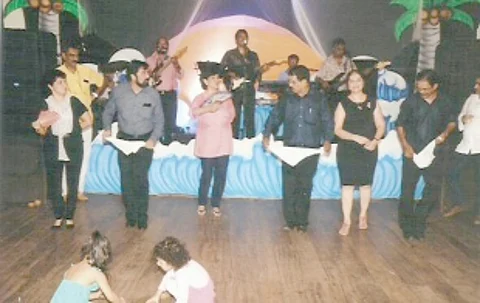

Shortly after the turn of the 20th Century, came the expressed need by certain segments of society, to have social clubs. These clubs, by and large acted as a meeting place, a hub where friends, colleagues, compatriots and contemporaries could unite. It was a place to call home, much like The Drones Club was a haunt for Bertram ‘Bertie’ Wooster, as created by P G Wodehouse. It was a place where the youth of yore fought an ideological war against their seniors much like the Imperial Fleet in Star Wars battled the Rebel Alliance. More than anything else, it was a place to meet and ‘hang out’, for the young founders of Clube Nacional, Clube Vasco da Gama and Clube Gaspar Dias in Panjim, Clube Harmonia and Clube Bernado Peres da Silva (BPS) in Margao, amongst other smaller contemporaries in the state. Fast forward a century later and things are drastically different. Youth involvement is little to nothing as compared to the heydays of these same clubs. Looking back a year ago to September 14, 2014, one can clearly recall the day that the roof of Clube Nacional came crashing down. It brought down with it part of Panjim’s history, though club events had long since shifted their base of operations to the Taleigao Community Centre. Tony Dias is a name that is synonymous with Clube Nacional. Over time, he has become the embodiment of joie-devivre, Carnival, merriment in the state and a cover artiste of renown for the 1970’s hit, ‘Help me make it through the Night’ by Kris Kristofferson. Still the current president of the age-old institution, he staunchly believes that Nacional has not been affected in any way, in terms of a youth presence at events, though their day to day absence might be felt to a larger extent. “Our events, from our dances, especially the ‘Red and Black’ and ‘Old is Gold’ have always had a large turn-out. The only place that we have perhaps faced such an absence is the addition of young blood to the roster. Club memberships have not been open for about a decade now, and as such, we have not had that injection of youth, admittedly,” he says. Further down south, in the heart of the commercial capital, Margao is another such iconic establishment: Clube Harmonia de Margao. The brainchild of some of Margao’s elite was conceptualised and run out of rented premises on the city’s outskirts in Borda, before the eventual premises were acquired. However, while the club was founded by a youthful core, its current incumbents, as their predecessors were before them, and theirs before in turn, are members of ‘the establishment’, who may not always be ideally positioned to fill what could be perceived a void that is a communication gap. One young member, Efigenia Miranda, raises a point of view that without youth representation, there cannot possibly be expectation of youth development. “The exposure to ideas of what is sought after by the younger crowd is imperative to the fostering of these ideas. One needs to understand that a younger target audience will not ‘simply just come to the club’ unless there is the incentive and motivation to do so. To begin with, there has to be a percentage of representation undertaken in the organising committee by younger members. Then there can be the generation of fresh ideas and development for the future,” she says. While there may be such a noticeable dwindling of a youth element in these clubs closer to home, there is a fair amount of young involvement in the counterparts in the metros. Poona Club has had members across generations of families, return time and again, to ensure that all the club’s activities stay strong. One such member, whose family has been an integral part of the club scene since the colonial era, is renowned dancer and dance instructor, Irisha Poonawalla. The youth icon speaks out, highlighting the differences between the running of such clubs, saying “Poona club maintains a good balance by catering to every age group. They have activities for the kiddies, the teen folks, their parents and pensioners too! These range from the topical and thematic to regular events. For instance, for kids, at Christmas they will have things like parties with gifts, music and an appearance made by Santa. However, moving on to more regular occurrences, they will have sport tournaments, movies every week for all ages, Tambola for the so inclined, plays for the more discerning palate, art exhibitions and highend flea markets for the trendy ladies.” It appears that Poona Club isn’t an exception in any way, with other colonial clubs inding similar young patronage being healthily included in their mix, albeit only from a certain ‘segment’ in society. Irisha goes on to add “Turf Club is still frequented by the good old timers who have seen it thrive through the British Raj, now giving way to a new breed of young millionaires, race enthusiasts and horse owners.” There may just be something to Eigenia’s views too. When asked whether there is a fair amount of representation of youth members in the organising committee which ensures catering to all ages, Irisha responds in the afirmative, adding “The past president of the Poona Club is one of the youngest there has ever been in the history of the club.” A century after their inception, Goa’s social clubs need to go through a state of introspection. Most clubs are being run by the second generation, who find themselves at the centre of the clubs activities, without the blooding of generation next. Perhaps something like the metro club model may work for us. Perhaps it won’t. However, the question that does need to be put forth is, how long can these clubs sustain themselves in this fashion?